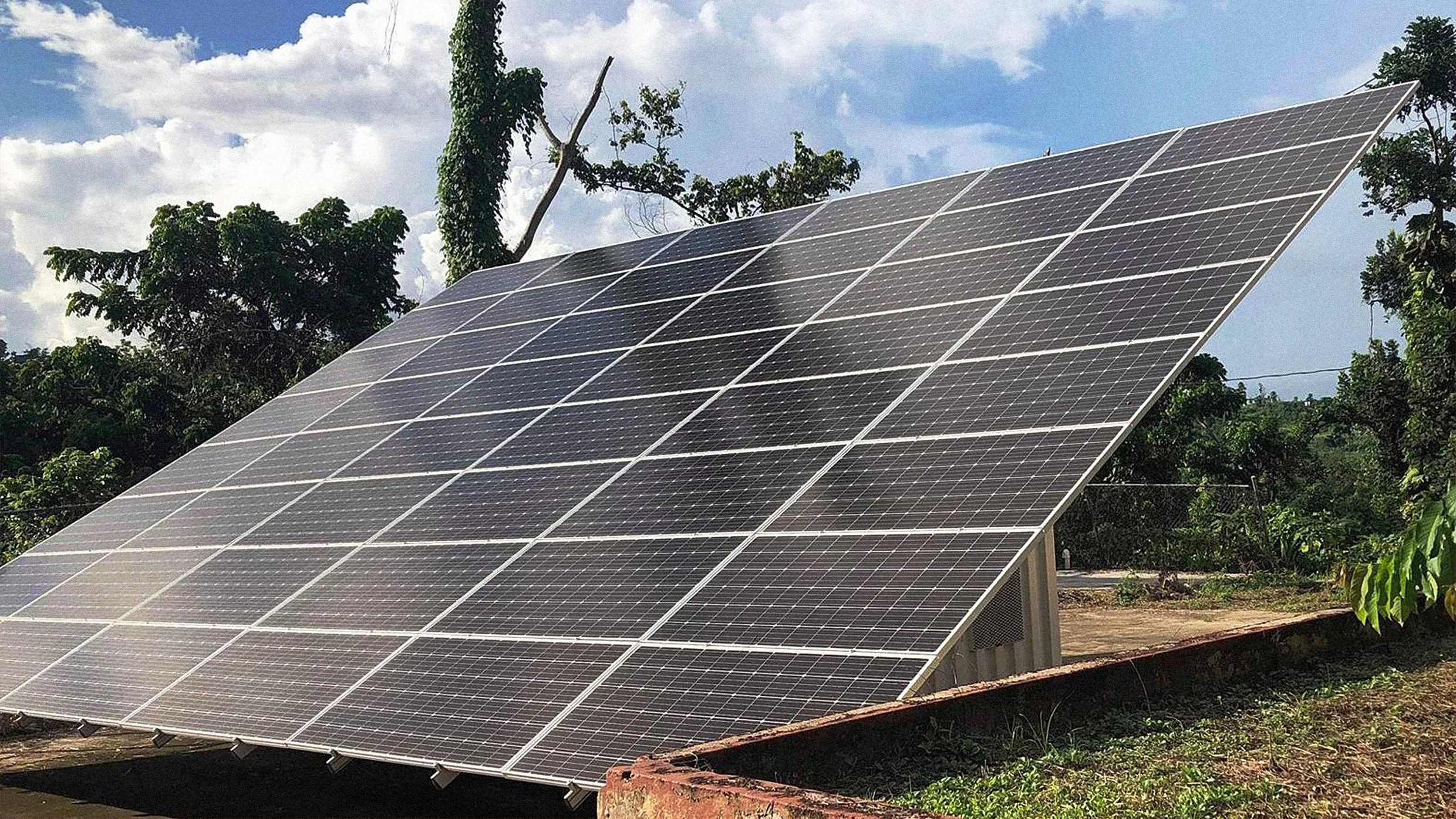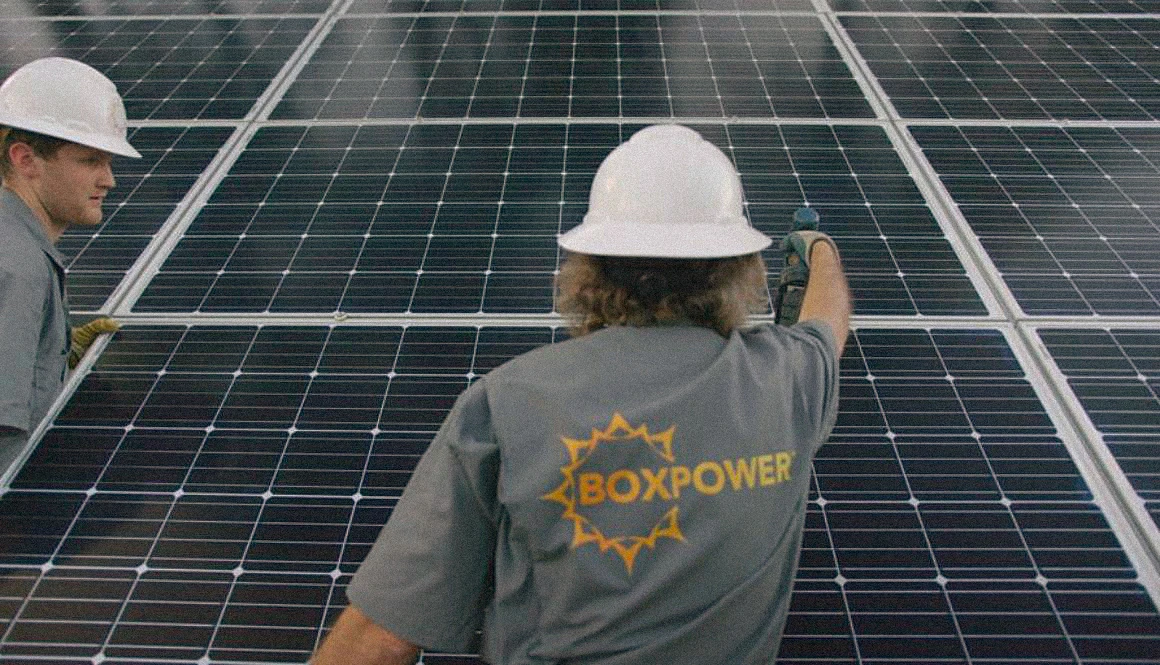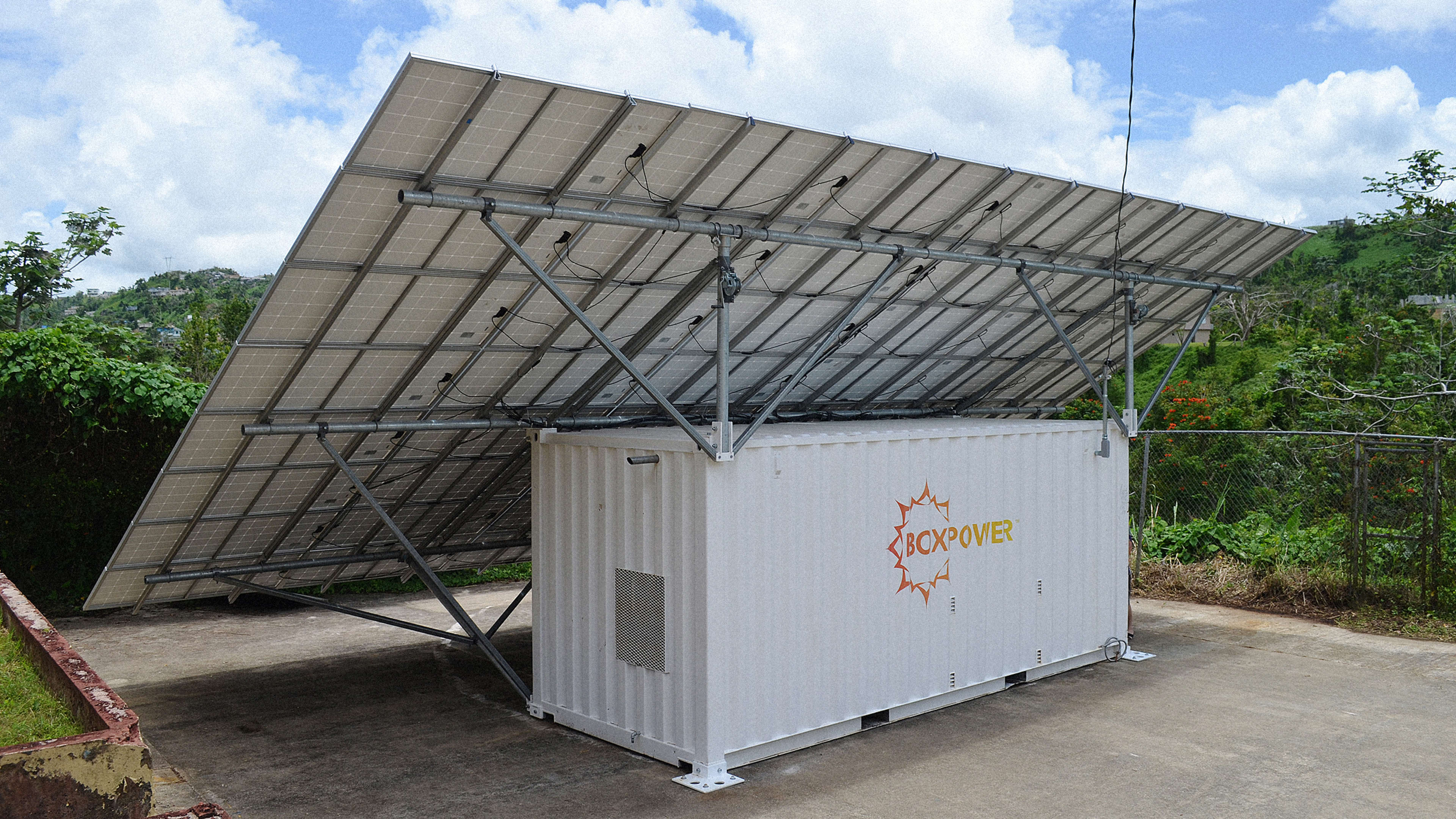Inside a shipping container currently en route to a school in Puerto Rico, a solar microgrid is ready for deployment: As soon as the container arrives, the system, from a startup called BoxPower, can be assembled and begin providing power in less than a day.
The system, designed for use both immediately after disasters and to make communities more resilient to future disasters, is easy to rapidly install. “We jokingly call ourselves the Ikea of microgrids because there is some assembly required, but it is color-coded, pre-cut, and pre-drilled,” says Angelo Campus, CEO and founder of California-based BoxPower. “And anyone who can assemble an Ikea dresser can assemble our solar array on top of the container. It doesn’t require any heavy equipment or machinery.”

Campus began working on the project as an undergraduate at Princeton, where two of his professors had worked with Engineers Without Borders after the 2010 earthquake in Haiti and made it clear to him that better solutions were needed for emergency power. After the earthquake, the Haitian government and aid agencies had mobilized huge fleets of generators, the standard response in disasters. But the plan failed. “It backfired terribly in Haiti because in addition to the electrical grid going down, there was a massive, island-wide fuel shortage,” says Campus.
Medical clinics and other critical facilities couldn’t run the generators, and they lost millions of dollars worth of medicine, vaccines, blood for transfusions, and other supplies. After the immediate deaths from the earthquake, by some estimates, 200,000 people died. The professors, along with a group of students that included Campus, launched a research lab to develop a renewable alternative to generators. After four years of working on the project, Campus decided to start a company to build on the project after graduation.
The first product fits inside a standard 20-foot shipping container, so it can easily be transported. Inside, there are solar panels and racks, along with a prewired battery, inverter, and a backup generator that runs on fossil fuels, so it can still be used if there’s ever a series of cloudy days and the battery runs low. “You get all the same reliability and consistency of having a generator but with an 80 or 90% fuel and therefore operating cost reduction,” Campus says.
The system can provide around 50 kilowatt-hours of electricity, or enough to power three or four homes or an energy-intensive business, the company says. If a disaster is imminent—such as a hurricane that might cause debris to fly into the solar panels—the whole system can be quickly disassembled and packed back inside the shipping container.

The startup had just finished developing the system when Hurricane Maria hit Puerto Rico in 2017, and it rushed to deliver a container to a school in a rural, mountainous region there where power was lost. Over the past year and a half, it has installed another 13 systems, including in remote Alaskan communities that previously relied solely on diesel power. In California, where the threat of wildfires has led to massive power shutoffs, the company will soon install a series of its systems at critical facilities like community medical centers. Initially, the company thought that it would focus on the developing world, in areas that lacked reliable access to electricity. Now, as climate change accelerates the pace of disasters everywhere, it’s also expanding in the U.S.
“There’s sort of a ‘reverse leapfrog’ going on, where this type of resilient system, solar and battery microgrids, has gained significant traction in places like West Africa, the Caribbean, developing nations,” he says. “Now there’s a reverse flow of knowledge, where we are taking what we’ve learned working in those markets and applying it to the current resiliency crisis facing businesses, consumers, and government agencies here in California.”

It also now sells a smaller “mini box” for a single home, which can be delivered in the back of a pickup truck. Since high demand for solar panels means that homeowners may sometimes wait as long as six months, the kit can help give quicker access. BoxPower’s system has a four to six week lead time and can be installed in a day.
The newest microgrid will be installed in Guayama, Puerto Rico, at a “resilience center” at a school, a place where anyone in the community can come to charge phones, use a refrigerator, or run medical equipment like oxygen tanks. Similar centers are in planning in California. Campus believes that this type of microgrid will also become common elsewhere. “I think the general trend and discourse in the industry right now is that everyone knew that the energy industry was moving toward decentralized microgrids, renewable resources, batteries, etc.,” he says. “What’s changed is the speed and the urgency with which things are changing, particularly for places like hurricane territory, as well as wildfire country where the immediate threat is very real and physical and existential.” The cost for both solar panels and batteries has also quickly dropped, so that electricity from the off-grid systems is now as cheap or cheaper than electricity from the grid.
“The incentives for distributed generation microgrids isn’t just about disasters and isn’t just about resiliency,” he says. “It’s quickly being proven to be actually the most cost-effective and reliable way to deliver power to communities, facilities, residences, businesses, and so. Driven by that, I think over the next five to 10 years, we can expect to see a massive adoption of microgrid technologies across the U.S. and across the world.”
Recognize your company's culture of innovation by applying to this year's Best Workplaces for Innovators Awards before the extended deadline, April 12.
